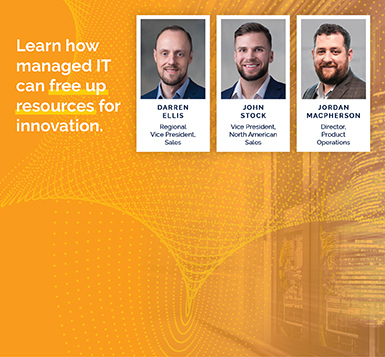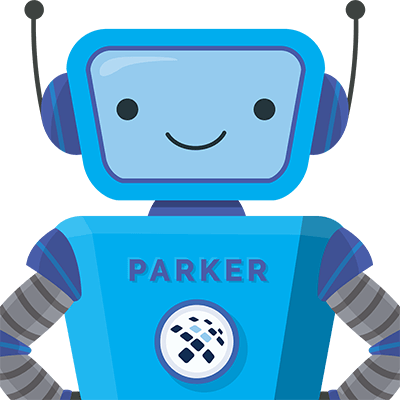Cloud is Still the New Thing. But CSPs Must Adapt to Getting Older.
Park Place Hardware Maintenance
Even the youngest IT pro has experienced it. Maybe it was that first gray hair or the feeling of puzzlement when confronted with the term hodl. Suddenly it’s clear that we, too, are getting older.
Today, cloud services providers (CSPs) are facing their own signs of aging. After all, key industry milestones, such as the launch of the first real SaaS offering from saleforce.com, reach back to before Y2K. Two decades is an eternity and tech, so its about time to come to terms with the changes.
The good news, such maturity includes many positives, for instance, a near-universal (95%) adoption rate for IaaS. CSPs sales collateral no longer needs to include extensive primers defining the cloud and describing its advantages. An established customer base is snatching up their offerings, driving aggressive growth from $67B in 2015 to a projected $162B by 2020.
On the other hand, certain adjustments must be made as companies transition from startup heyday to something more akin to middle age. Many of these adaptations apply to the physical components of their data centers.
Increasingly Diverse Infrastructure.
In the early years of operation, it’s easy to maintain a very matchy matchy data center. An edict from the CIO or IT Director is enough to ensure all servers are this model and all networking gear comes from that original equipment manufacturers (OEM).
As the years go by, things change. Businesses must always seek the best hardware for their needs at the best price. Rarely is the right storage array produced by the same OEM as the right server or switch. Thus nearly every data center starts out with some brand diversity, the hyperscale providers using black box equipment being the possible exception.
Then as vendors jockey for mindshare and rack-share, different products earn their place in the environment. This year’s winner in any category, whether hybrid flash array or SDN controller, could easily be overtaken by a competitor with the next product refresh.
A once homogenous data center housing equipment from three to five OEMs can start to resemble a flea market with finds from dozens of vendors. For every additional brand that takes hold, there are significant impacts. The CSP finds itself dealing with:
- Different technologies with different quirks and common bugs, different maintenance needs, and different update schedules
- Warranties from yet more OEM companies, each with different coverage options and renewal dates
- More points of contact in the troubleshooting chain, all with different escalation processes
Together these factors can cause headaches for personnel in departments ranging from contract management to systems administration. And they can ultimately affect uptime.
Aging Infrastructure Components
Older CSPs generally own more diverse hardware, thats one issue. Another, simply being in business longer means some equipment on the floor won’t be shiny and new. Just as the trendy HQ décor eventually becomes dated, IT hardware will age.
Smart businesses don’t replace everything with brand new all the time. Doing so would be a recipe for bankruptcy. Strategic refreshes are in order.
A barrier to flexible lifecycle management in the data center often comes from the OEMs. These companies are in the business of making and marketing IT equipment, and they have various policies aimed at driving more sales.
For example, initial hardware warranties typically last one to three years, and renewing support after that period often comes with a steep price hike. By making older equipment more expensive to maintain, the OEMs tip the financial equation toward new purchases, and it often works.
Then there is end of support life (EOSL), when an OEM support contract cannot be had at any price. This is where the OEM pressures recalcitrant customers to upgrade.
The problem from the CSP side is that there may be value remaining in the older hardware. Better than upgrading on the OEMs schedule, CSPs need to claim the driver’s seat and determine the appropriate lifespan of particular equipment based on considerations like the business needs, budget, and hardware performance.
A Victim of Their Own Success
Another symptom of market maturity: consolidation. A Forrester Research reports says its reaching near oligopolistic levels in some CSP sectors. While many commentators are raising concerns about customer impacts from an increasingly powerful Big 3AWS, Microsoft, and Googlethere are also implications for the remaining competitors who are joining forces to survive and grow.
Merger and acquisition strategy aside, rampant data center acquisitions, especially in the IaaS space, mean many CSPs are now support hybrid environments. Two formerly independent companies making vastly different choices about IT hardware become joined at the hip, often at the same time staffing adjustments are made and other efficiencies are sought.
This can easily lead to reliability problems if the CSP doesn’t compensate for the added data center complexity with appropriate expertise and maintenance management capabilities.
Competing on Cost
In the background, there is another issue to consider. Cloud is not yet a commodity, but some sectors are commoditizing. Among other things, this means pricing pressures. With the leading hyperscale providers dominating 76% of the cloud market, the fight to win the remainder is intense.
When a fraction of a cent difference in a pay-as-you-grow offering can push customers toward another service, CSPs must ramp up their hunt for efficiencies wherever they may be found. Against this backdrop, unnecessary hardware upgrades, outsized staffing investments, and other big spend adaptations dont make sense.
A complicating factor is the talent gap. Even if CSPs want to throw people at their problems, they cant. There simply arent enough skilled professionals to go around. In a tight labor market, many CSPs discover that they can’t afford another CCIE network engineer or, more likely, can’t find one at any price.
CSPs must devise other ways to deal with increasingly complex, hybrid data centers packed with components that seem to age overnight.
Whats to Be Done?
To summarize, the problems for maturing CSPs and their data center operations include:
- Support complexity. Greater OEM variety within and between CSP data centers results in more warranties to manage and a more fraught support process involving multiple OEMs. It’s not the picture of efficiency or fast, effective problem response.
- Lifecycle management issues. Aging hardware with increasing support costs can push CSPs to make premature investments in new equipment, forgoing the full value and ROI residing on the floor today. This can put a company at a competitive disadvantage.
- Talent crunch. Data center complexity also complicates human resources, as it becomes more difficult to attract and retain the full spectrum of expertise required.
- Price pressures. A commoditizing CSP market combined with a talent shortage are working at cross-purposes, pushing prices down but staffing costs up. CSPs are looking for new solutions to trim spending so they can survive and grow.
Fortunately, third party maintenance (TPM) offers key advantages in addressing these challenges. TPM providers specialize in IT support and can cover equipment from nearly any vendor. Contract administration becomes much easier, as there is just one provider and one renewal date to worry about. Additionally, most companies allow greater flexibility in customizing and adjusting the contract to align with an evolving environment.
Working with a responsive provider also means gaining immediate access to Level 3 engineers, and the best companies in the market boast a deep bench of expertise spanning all major server, storage, and networking brands. They not only understand the particularities of the hardware, they can help with software and firmware concerns, too. The cost-savings compared with staffing similar capabilities in-housedozens of engineers of varying expertise at a minimumare substantial.
Finally, third party maintenance providers help get CSPs off the OEM upgrade treadmill. Contracts are available for equipment at all stages of the lifecycle, even post-EOSL. Most providers don’t increase prices as hardware ages, either. Some will even bring alternative upgrade strategies to the table to further extend lifespan.
With average prices 60% lower than OEM support, TPM solutions make it financially feasible to keep hardware longer. That results in greater ROI on hardware investments, less annual capital expenditure on equipment, and less time and resources devoted to choosing, training for, installing, and configuring new systems.
Getting older should entail getting wiser. For CSPs, smarter support decisions involving third party maintenance can be the answer they’ve been looking for controlling data center costs and sticking around for another decade and more.



